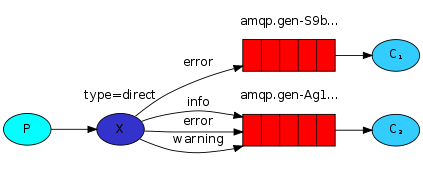build.gradle
group 'ir.mhdr'
version '1.0-SNAPSHOT'
apply plugin: 'java'
sourceCompatibility = 1.8
mainClassName="Main"
repositories {
mavenCentral()
}
dependencies {
// https://mvnrepository.com/artifact/org.hibernate/hibernate-core
compile group: 'org.hibernate', name: 'hibernate-core', version: '5.2.10.Final'
// https://mvnrepository.com/artifact/org.hibernate/hibernate-gradle-plugin
compile group: 'org.hibernate', name: 'hibernate-gradle-plugin', version: '5.2.10.Final'
// https://mvnrepository.com/artifact/mysql/mysql-connector-java
compile group: 'mysql', name: 'mysql-connector-java', version: '6.0.6'
// https://mvnrepository.com/artifact/org.slf4j/slf4j-api
compile group: 'org.slf4j', name: 'slf4j-api', version: '1.7.25'
// https://mvnrepository.com/artifact/org.slf4j/slf4j-simple
testCompile group: 'org.slf4j', name: 'slf4j-simple', version: '1.7.25'
testCompile group: 'junit', name: 'junit', version: '4.12'
}
Employee.java
import javax.persistence.*;
@Entity
@Table(name = "EMPLOYEE")
public class Employee {
@Id
@GeneratedValue
@Column(name = "id")
private int id;
@Column(name = "first_name")
private String firstName;
@Column(name = "last_name")
private String lastName;
@Column(name = "salary")
private int salary;
public Employee() {
}
public Employee(String fname, String lname, int salary) {
this.firstName = fname;
this.lastName = lname;
this.salary = salary;
}
public int getId() {
return id;
}
public void setId(int id) {
this.id = id;
}
public String getFirstName() {
return firstName;
}
public void setFirstName(String first_name) {
this.firstName = first_name;
}
public String getLastName() {
return lastName;
}
public void setLastName(String last_name) {
this.lastName = last_name;
}
public int getSalary() {
return salary;
}
public void setSalary(int salary) {
this.salary = salary;
}
}
resources/hibernate.cfg.xml
<?xml version="1.0" encoding="utf-8"?>
<!DOCTYPE hibernate-configuration SYSTEM
"http://www.hibernate.org/dtd/hibernate-configuration-3.0.dtd">
<hibernate-configuration>
<session-factory>
<property name="hibernate.hbm2ddl.auto">create</property>
<property name="hibernate.show_sql">true</property>
<property name="hibernate.format_sql">true</property>
<property name="hibernate.dialect">
org.hibernate.dialect.MySQL57Dialect
</property>
<property name="hibernate.connection.driver_class">
com.mysql.cj.jdbc.Driver
</property>
<!-- Assume test is the database name -->
<property name="hibernate.connection.url">
jdbc:mysql://localhost/testdb?useUnicode=yes&characterEncoding=UTF-8&useJDBCCompliantTimezoneShift=true&useLegacyDatetimeCode=false&serverTimezone=UTC
</property>
<property name="hibernate.connection.username">
root
</property>
<property name="hibernate.connection.password">
sampad622
</property>
<!-- List of XML mapping files -->
<mapping class="Employee"/>
</session-factory>
</hibernate-configuration>
ManageEmployee.java
import org.hibernate.HibernateException;
import org.hibernate.Session;
import org.hibernate.SessionFactory;
import org.hibernate.Transaction;
import org.hibernate.cfg.Configuration;
import java.util.Iterator;
import java.util.List;
public class ManageEmployee {
private SessionFactory factory;
public ManageEmployee() {
factory = new Configuration().configure().buildSessionFactory();
}
/* Method to CREATE an employee in the database */
public Integer addEmployee(String fname, String lname, int salary) {
Session session = factory.openSession();
Transaction tx = null;
Integer employeeID = null;
try {
tx = session.beginTransaction();
Employee employee = new Employee(fname, lname, salary);
employeeID = (Integer) session.save(employee);
tx.commit();
} catch (HibernateException e) {
if (tx != null) tx.rollback();
e.printStackTrace();
} finally {
session.close();
}
return employeeID;
}
/* Method to READ all the employees */
public void listEmployees() {
Session session = factory.openSession();
Transaction tx = null;
try {
tx = session.beginTransaction();
List employees = session.createQuery("FROM Employee").list();
for (Iterator iterator =
employees.iterator(); iterator.hasNext(); ) {
Employee employee = (Employee) iterator.next();
System.out.print("First Name: " + employee.getFirstName());
System.out.print(" Last Name: " + employee.getLastName());
System.out.println(" Salary: " + employee.getSalary());
}
tx.commit();
} catch (HibernateException e) {
if (tx != null) tx.rollback();
e.printStackTrace();
} finally {
session.close();
}
}
/* Method to UPDATE salary for an employee */
public void updateEmployee(Integer EmployeeID, int salary) {
Session session = factory.openSession();
Transaction tx = null;
try {
tx = session.beginTransaction();
Employee employee =
(Employee) session.get(Employee.class, EmployeeID);
employee.setSalary(salary);
session.update(employee);
tx.commit();
} catch (HibernateException e) {
if (tx != null) tx.rollback();
e.printStackTrace();
} finally {
session.close();
}
}
/* Method to DELETE an employee from the records */
public void deleteEmployee(Integer EmployeeID) {
Session session = factory.openSession();
Transaction tx = null;
try {
tx = session.beginTransaction();
Employee employee =
(Employee) session.get(Employee.class, EmployeeID);
session.delete(employee);
tx.commit();
} catch (HibernateException e) {
if (tx != null) tx.rollback();
e.printStackTrace();
} finally {
session.close();
}
}
}
Main.java
import org.hibernate.SessionFactory;
import org.hibernate.cfg.Configuration;
public class Main {
public static void main(String[] args) {
ManageEmployee ME = new ManageEmployee();
/* Add few employee records in database */
Integer empID1 = ME.addEmployee("Zara", "Ali", 1000);
Integer empID2 = ME.addEmployee("Daisy", "Das", 5000);
Integer empID3 = ME.addEmployee("John", "Paul", 10000);
/* List down all the employees */
ME.listEmployees();
/* Update employee's records */
ME.updateEmployee(empID1, 5000);
/* Delete an employee from the database */
ME.deleteEmployee(empID2);
/* List down new list of the employees */
ME.listEmployees();
}
}
References
https://github.com/mhdr/HibernateSamples/tree/master/002_CRUD


